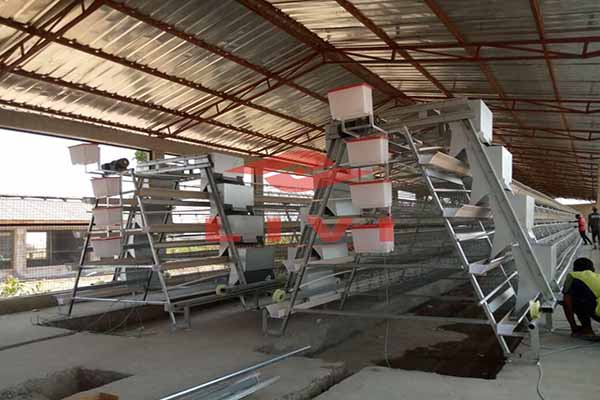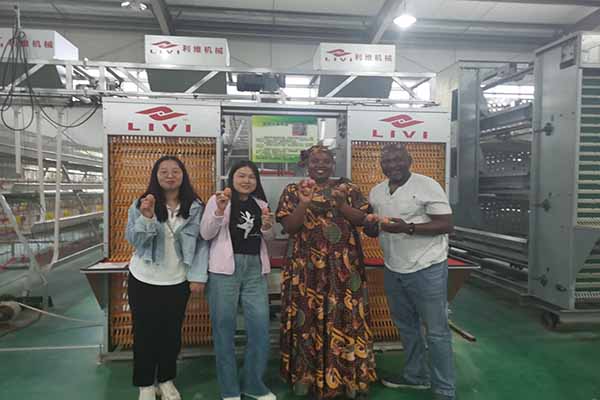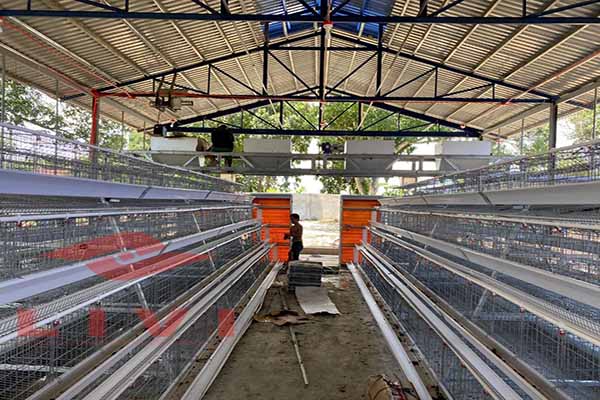Automated Farming in Tanzania: Chicken Equipment Cost Analysis
Time : 2025-06-29
Introduction

Automated farming has revolutionized the agricultural sector, and Tanzania is no exception. With the increasing demand for poultry products and the need for efficient farming practices, automated chicken equipment has become a popular choice among farmers. This article provides a comprehensive cost analysis of chicken equipment for automated farming in Tanzania, focusing on the key factors that influence the overall cost and the potential return on investment.
Understanding Automated Chicken Equipment
Automated chicken equipment encompasses a range of technologies designed to streamline poultry farming operations. This includes automated feeding systems, drinking systems, lighting, temperature control, and egg collection systems. Each of these components plays a crucial role in ensuring the health and productivity of the chickens, while also reducing labor costs and improving overall efficiency.
Feeding Systems
Feeding systems are a cornerstone of automated farming. They ensure that chickens receive the right amount of feed at the right time, which is essential for their growth and development. In Tanzania, the cost of automated feeding systems can vary widely depending on the scale of the farm and the specific technology used. Small-scale farms might invest in manual feeding systems, which can cost as little as $200, while larger operations may opt for automated systems that can cost up to $10,000 or more.

Drinking Systems
Access to clean water is crucial for the health of chickens. Automated drinking systems can be installed at a cost of around $500 for a basic system, but higher-end models with advanced water purification and temperature control features can cost several thousand dollars.
Lighting and Temperature Control
Chickens require controlled environments to thrive. Automated lighting systems and temperature controllers are essential for maintaining optimal conditions. These systems can range in cost from $1,000 to $5,000, depending on the complexity and the number of chickens being housed.
Egg Collection Systems
Egg collection systems are a vital part of automated farming. They can be as simple as a manual system that costs a few hundred dollars or as complex as an automated system that can cost tens of thousands of dollars. The choice depends on the scale of the operation and the level of automation desired.
Cost Analysis Factors
Several factors influence the cost of chicken equipment for automated farming in Tanzania:
- Scale of Operation: Larger farms require more extensive equipment, which increases the overall cost.
- Quality of Equipment: Higher-quality equipment often comes with a higher price tag but can offer better durability and efficiency.
- Local Suppliers: Prices can vary depending on the supplier, with local manufacturers offering competitive pricing.
- Installation and Maintenance: The cost of installation and ongoing maintenance should also be considered when budgeting for automated chicken equipment.
Return on Investment
While the initial cost of automated chicken equipment can be significant, the potential return on investment (ROI) is substantial. Automated systems can lead to:
- Increased Productivity: By ensuring that chickens receive optimal care and conditions, automated systems can lead to higher egg production and healthier birds.
- Reduced Labor Costs: Automation reduces the need for manual labor, which can lower labor costs over time.
- Improved Health and Welfare: Automated systems can help maintain a healthier environment for chickens, reducing the risk of disease and improving their overall welfare.
According to a study by the Tanzania Poultry Association, farms that invest in automated systems can see a return on investment within three to five years, depending on the scale and efficiency of the operation.
Conclusion
Automated chicken equipment offers numerous benefits for farmers in Tanzania, including increased productivity, reduced labor costs, and improved chicken health and welfare. While the initial investment can be substantial, the long-term ROI makes it a viable option for many poultry farmers. Conducting a thorough cost analysis, considering the scale of the operation, and choosing the right equ ipment are crucial steps in ensuring a successful automated farming venture.
ipment are crucial steps in ensuring a successful automated farming venture.











